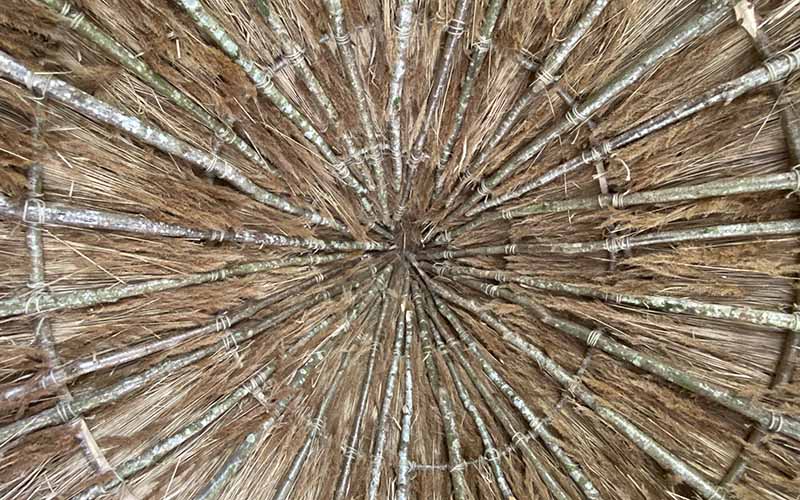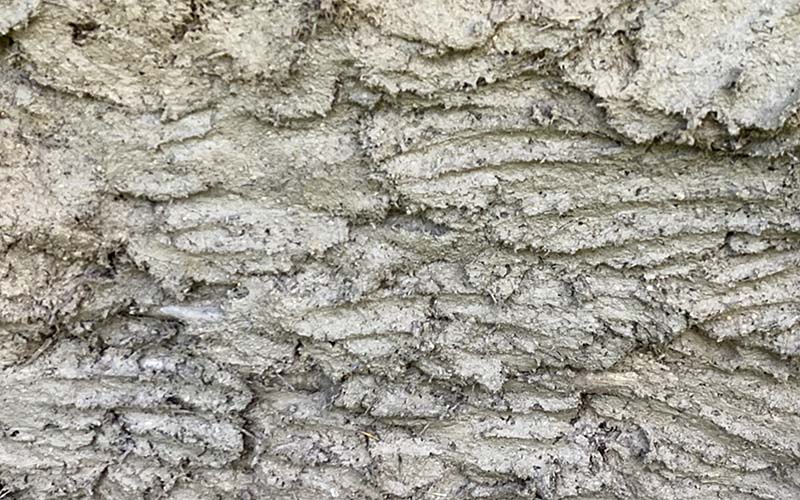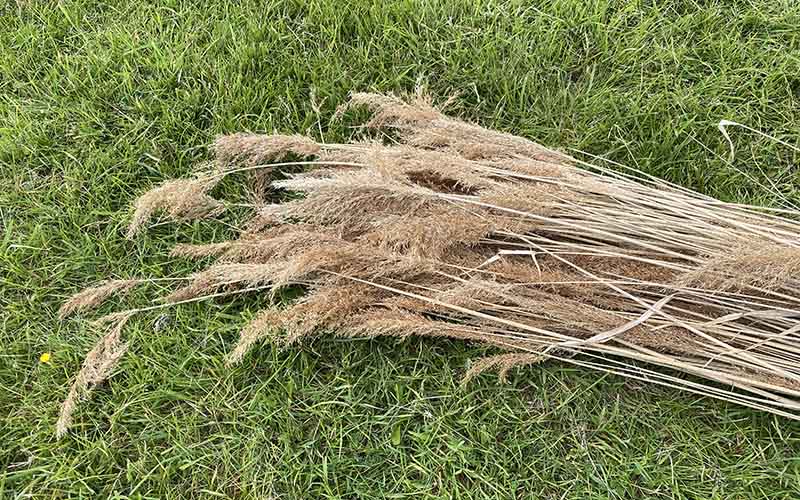Iron Age roundhouse
For the first time ever, Chalke Valley History Festival will have a replica of an Iron Age roundhouse on site. It’s been built by the team at the Ancient Technology Centre in Cranborne, with help from local scout groups who got hands-on with the daubing.

It’s secured to the ground with hazel stakes. Hazel also provided the wall structure as branches have been woven into panels and attached.
The walls were filled with daub made from clay, sand and straw and the roof is made from water reed, which can be seen in abundance around Weymouth.

A little panel has been left inside so visitors can see how it has been made and the internal structure.
Anthony Whitlock, Tutor at the Ancient Technology Centre said: “There’s lots of evidence of buildings like this in this country in the archaeological record, but nothing above ground.
“There’s lots of evidence from excavations for the circular shape – you can see the stake holes where they would have had the structure of the walls and stakes driven into the ground and there’s evidence as well for woven walls. We’ve used hazel and hazel has been used in this country for centuries for construction.
The daub recipe is a mixture of clay and sand and straw but in the past, people would have used locally whatever they had under their feet. At the Ancient Technology Centre it’s chalk predominantly when you dig down and that can be used in the same way. You can mix it up with a bit of water and make it squishy. Straw, hay, animal hair or anything with fibre ties the daub mix together and gives it strength. It also controls the cracking. If you purely use clay, it will crack a lot so by adding aggregate, it controls that. It also has insulative properties so it keeps the wind out and the heat from the fire in and makes it really cosy inside.
“We’re using water reed for the thatch. In this country generally you’re going to use straw or reed. Water reed would have been readily available in the Iron Age and wheat straw as well. Back in the day, the wheat straw would have been better than modern straw as modern straw has been engineered to have a short stalk and a big head whereas in the past it was the opposite way round with a much longer stalk.”

The roundhouse will have two Iron Age reenactors living in it during the festival. They’ll use it for teaching to show the level of sophistication of Iron Age people and they’ll be refining the building by polishing the walls with smooth pebbles and then decorating the inside.
Chalke Valley History Festival runs from 20 to 26 June.